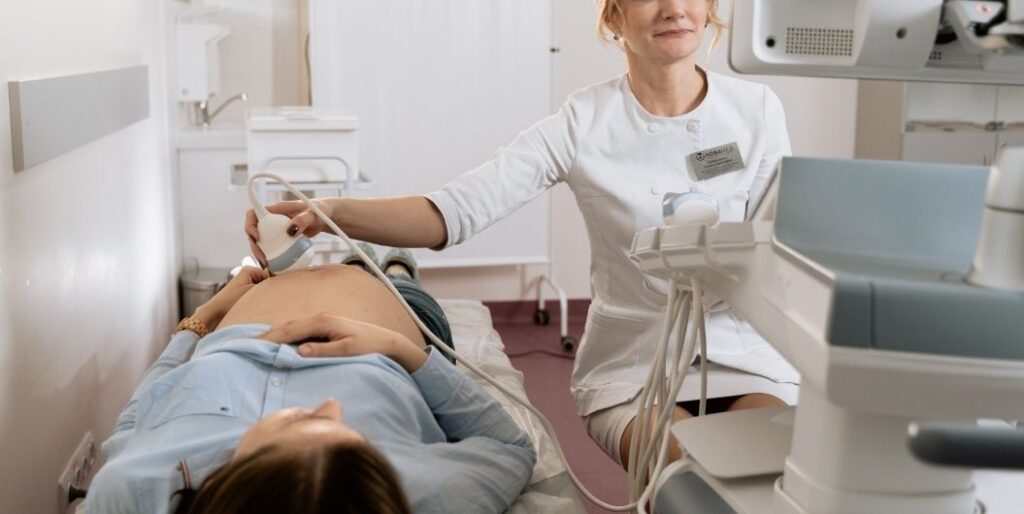What is an Ultrasound?

Most couples impatiently await their first scheduled ultrasound to get a peek at their growing baby, and to confirm that the baby is healthy and developing normally. Since the mid 20th century, the use of the obstetric ultrasound has steadily become a mainstay of the prenatal care regimen. An ultrasound makes use of high frequency sound waves (between 3.5 and 7.0 megahertz), which are emitted through a transducer. This transducer wand is applied to the abdomen, where the waves bounce back to the transducer and are translated to show “slices” of the uterus on a computer screen.
The obstetrical ultrasound is utilized for several different reasons during a woman’s pregnancy. The following include the most typical reasons an ultrasound is performed.
- The obstetrical ultrasound helps the doctor diagnose and confirm pregnancy soon after conception.
- Explain vaginal bleeding early on in the pregnancy.
- Helps determine the age and size of the fetus.
- Identifies and diagnoses fetal malformations.
- Locates and assesses the placenta and amount of amniotic fluid.
- Diagnoses multiple fetuses.
- Helps provide a general evaluation of the fetus.

An ultrasound can detect a gestational sac as early as four and a half weeks, and an embryo a week later. A fetus’s heartbeat can be detected by six to seven weeks. For women who are experiencing vaginal bleeding early in the pregnancy, an ultrasound can confirm the pregnancy is still viable, or if the woman is experiencing a miscarriage, or has experienced a missed miscarriage.
When and how frequently an ultrasound is utilized is up to your doctor’s discretion. Some doctors may choose to use one on your first visit to confirm pregnancy, while others may feel a urine test is sufficient confirmation. It is becoming more common for doctors to perform an ultrasound earlier, from 11 to 14 weeks, now that advances in the technology are facilitating better diagnosis of certain birth defects. By and large, most women will have one ultrasound around 18 to 20 weeks, where the doctor will assess the health and development of the fetus, and confirm the gestational age.
After 7 weeks, a crown to rump length (CRL) measurement can determine the gestational age of a fetus with surprising accuracy, usually within three to four days. After 13 weeks, other measurements are utilized, including the biparietal diameter (BPD), which is the diameter of the head; femur length (FL), which measures the baby’s length; and abdominal circumference (AC), which determines more the baby’s size than age.
Ultrasounds are also used to help the doctor perform certain prenatal tests, such as the amniocentesis, by showing him where to place the needle to withdraw the amniotic fluid. If your doctor has an ultrasound machine at his or her practice, you may have an unscheduled ultrasound if he has trouble detecting the heartbeat, or if you’ve experienced other complications. The typical ultrasound performed around 18 to 20 weeks will provide an assessment of the baby’s development, health and gestational age, and in some cases, will reveal the baby’s gender. This is not required, or medically necessary, but most parents welcome this moment with much anticipation.
You may have another ultrasound performed around 32 weeks if the doctor is following up on a certain complication or concern, such as placenta previa. 3-D and 4-D ultrasounds are providing pregnant women with opportunities to see their child in crisp, 3-D images outside of their doctor’s office. While these are increasingly being utilized for diagnostic purposes, they are generally considered a fun experience that shows parents if their baby has inherited their grandpa’s nose, or mother’s chin.
